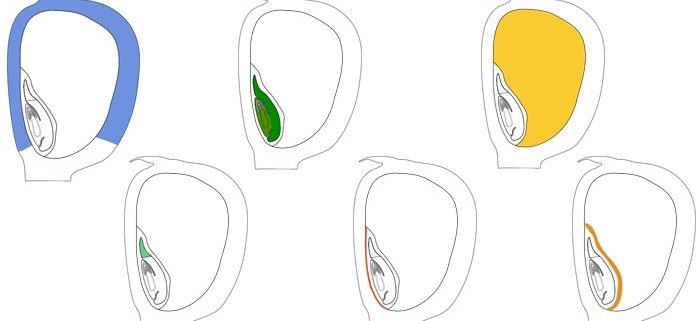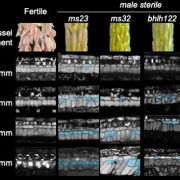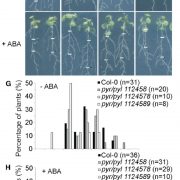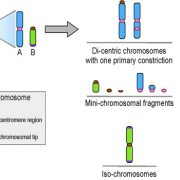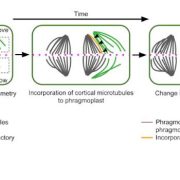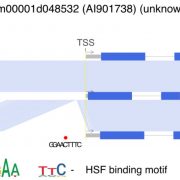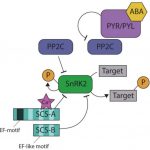Family dynamics within the seed: Identification of new cell types in maize endosperm
Doll et al. examine the structure of maize seeds and identify a distinct cell type in the endosperm next to the embryo. https://doi.org/10.1105/tpc.19.00756
Nicolas M. Doll, Peter M. Rogowsky and Thomas Widiez
Laboratoire Reproduction et Développement des Plantes, Univ Lyon, ENS de Lyon, UCB Lyon 1, CNRS, INRAE, F-69342, Lyon, France.
Background: Seeds are the basis of human nutrition and allow the propagation of the next plant generation. They are organized like Russian dolls––the future plant or embryo is surrounded by a nourishing tissue, the endosperm, itself enclosed by the protective seed coat. The embryo can only grow if the endosperm and seed coat grow at the same time. In addition, embryo growth requires nutrient transfers first from the seed coat to the endosperm, and then from the endosperm to the embryo. The successful communication between the three parts is necessary to achieve seed development and has a profound impact on its final size, composition, structure and quality.
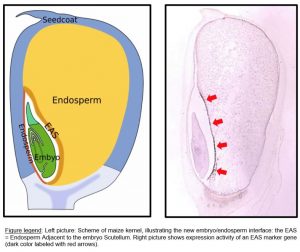 Question: We wondered whether the parts of the endosperm in direct contact with the embryo were different from the rest of the endosperm. Whereas previous microscopic observations had not revealed any obvious differences, nobody had ever looked for differences in the genetic program.
Question: We wondered whether the parts of the endosperm in direct contact with the embryo were different from the rest of the endosperm. Whereas previous microscopic observations had not revealed any obvious differences, nobody had ever looked for differences in the genetic program.
Findings: The parts of the endosperm in direct contact with the embryo in the maize seed were dissected and the genetic program compared to that of the rest of the endosperm. Despite an overall similarity, parts of the program were clearly distinct and allowed us to define a new sub-region of the endosperm that we named endosperm adjacent to the embryo scutellum (EAS). Interestingly, a great number of the genes active in the EAS and not in the rest of the endosperm were linked to transport functions. The EAS changes during seed development. The cells in direct contact with the embryo are dying to provide space for embryo growth, whereas “normal” endosperm cells are recruited to fulfill EAS functions. Lastly, the absence of the embryo impacts the activity of some genes in the EAS, indicating that the embryo plays a role in the make-up of the EAS.
Next steps: If the specific production of a transport or signaling component in the EAS is a solid basis for the working hypothesis that this component is involved in endosperm/embryo nutrient supply or communication, proof needs to be provided. A future challenge is to tackle the mechanistic basis for growth co-ordination and trophic relations between maize seed compartments.
Nicolas M. Doll, Jeremy Just, Véronique Brunaud, José Caïus, Aurélie Grimault, Nathalie Depège-Fargeix, Eddi Esteban, Asher Pasha, Nicholas J. Provart, Gwyneth C. Ingram, Peter M. Rogowsky and Thomas Widiez (2020) Transcriptomics at Maize Embryo/Endosperm Interfaces Identifies a Transcriptionally Distinct Endosperm Sub-domain Adjacent to the Embryo Scutellum. https://doi.org/10.1105/tpc.19.00756


